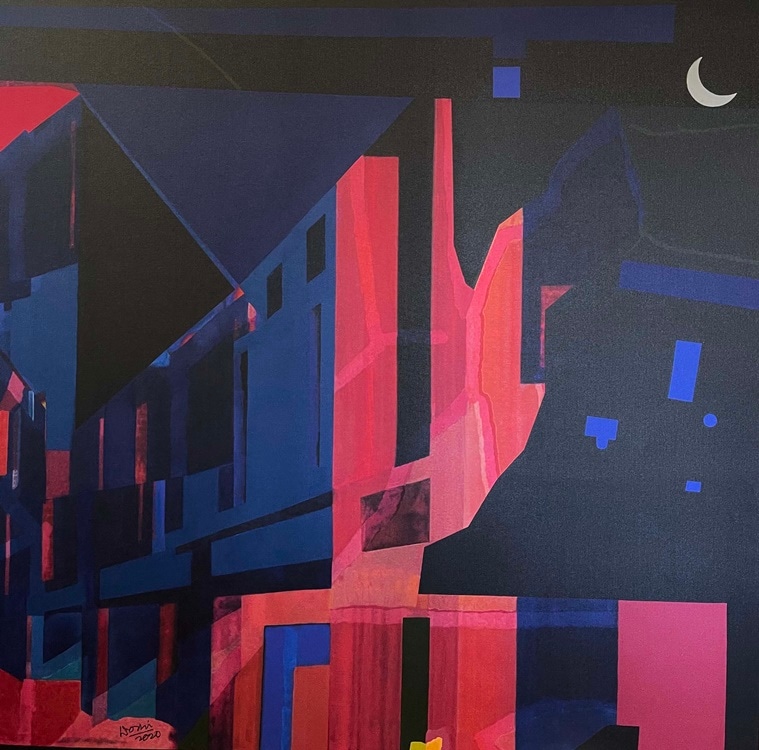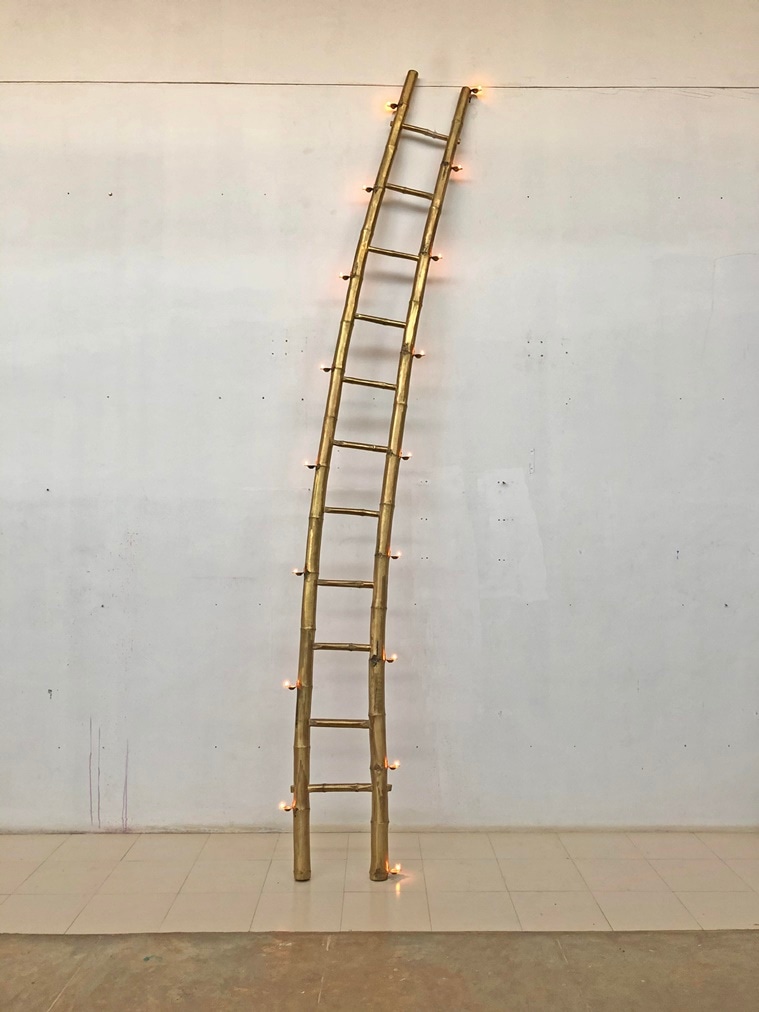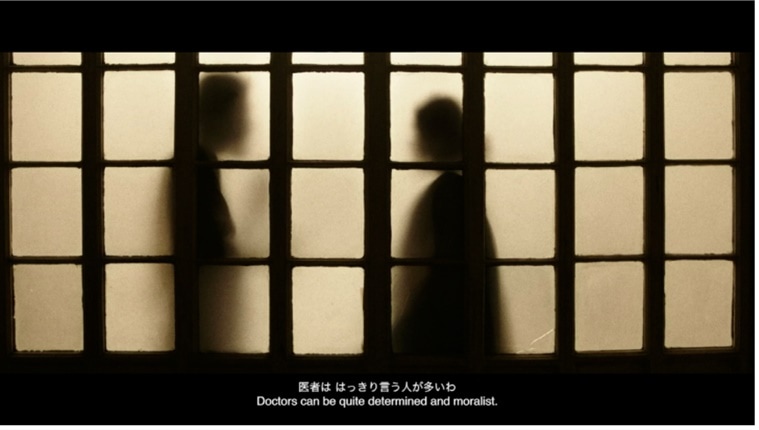Tales of our times: Four leading galleries come together
Although the art world is gradually recovering and the spaces of White Cube welcome visitors by appointment, a exposition in Delhi that urges viewers to introspect and inquire, discover and negotiate. It brings together some of the most prominent galleries in India – Experimenter, Nature Morte, Chemould Prescott Road and Vadehra Art Gallery – and some of its most recognized artists, also sharing with us works made by them in recent months devastated by the pandemic.
A work from the Homeward series by Arpita Singh
Before the entrance of one of the majestic buildings of Bikaner House is NS Harsha’s Desired for Arrived at (chaha kya paya kya). The 14.6 x 1.6 foot staircase contemplates the “ever-changing position in one’s life journey and how the destiny we experience always seems changed / altered in the end.” The Mysuru artist recalls how the idea stuck with him since he observed a bamboo ladder maker at work, choosing straight or nearly straight bamboos rather than bent ones “so he could make ladders that eventually help the climber reach the point. desired space “. . “Since the ‘truth of life’ is in a hidden / shifted position, our journey towards it is bound to be twisted, but certainly not straight like a bamboo ladder maker’s wish that exists in all of us,” he notes. Harsha.
While that sets the tone for the exposition “On / Site”, Mithu Sen shares a set of more than 25 “colorless happy puncture drawings” in the series “Until you let go” that probes, among others, the perception of images. On the center wall, he writes: “Given the current unprecedented climate, as an artist, I am socially distancing myself from all negative, dark and unhappy images by strictly following the Yes / No list below.” If Beauty and Smiley get a ‘Yes’, there is a ‘No’ for Protest, Antisocial Distancing, and Essential Culture, among others.
If Atul Dodiya catalogs “fear as an engine of both hope and anxiety”, Shilpa Gupta’s article 6,10.3,2 explores “the excessive intensification of individual emotions resulting from unexpected and somehow continuous blockage due to the global pandemic – where ‘6’ refers to the minimum social distance that must be maintained in feet, ’10 .3 ‘refers to the same distance measured by Gupta’s palm and’ 2 ‘is its conversion into meters ”.
 Artwork by BV Doshi
Artwork by BV Doshi
Asim Waqif, LN Tallur, and Martand Khosla are creating a dialogue between art and science, each of which explores different dimensions. If Khosla’s miniature furniture ensemble explores domesticity and gravity at the same time, in his new sculptures, LN Tallur questions the relationship between the traditional and the contemporary.
It is up to us to find solutions to today’s problems, as evident in the exhibition entitled “Remnants of Memories” curated by Khushnu Panthaki Hoof. The older drawings by architect BV Doshi, as well as his recent canvases, reflect how the recipient of Padma Bhushan placed an emphasis on sustainability and navigated the relationship between space and culture, creating a balance between local needs and culture and western inspirations. Occupying one corner is a teak wood door designed for the Gunvant Mangaldas House in Ahmedabad.
 NS Harsha’s 14.6 x 1.6 foot staircase contemplates the “ever-changing position in life’s journey
NS Harsha’s 14.6 x 1.6 foot staircase contemplates the “ever-changing position in life’s journey
In her latest watercolors and oil paintings titled “Homeward,” Arpita Singh adds new elements to her autobiographical depictions, sharing her turbulence and celebrations. The lines are more tangled in Reba Hore’s confident strokes: the late artist’s works are part of “Do you know how to light a fire?”, A group exhibition of intergenerational works.
women artists with works by Ayesha Sultana, Biraaj Dodiya and Radhika Khimji.
 Jole Dobe Na (Those Who Don’t Drowning) by Naeem Mohaiemen, Debuts in India at the Delhi Exhibition
Jole Dobe Na (Those Who Don’t Drowning) by Naeem Mohaiemen, Debuts in India at the Delhi Exhibition
If the starting point is the Harsha bronze installation, Prabhakar Pachpute and Naeem Mohaiemen offer a fitting conclusion. Pachpute’s recent oil paintings imagine “the future of a post-mining and post-industrial landscape”, proposing a possibility beyond objects and people. It is a proposal also suggested by Naeem Mohaiemen in the film Jole Dobe Na (Those who do not drown), which enunciates how the deceased live in the minds of those who are left behind.
The exhibition is at Bikaner House, Delhi, until March 9.
For more lifestyle news, follow us: Twitter: lifestyle_ie | Facebook: IE lifestyle | Instagram: ie_lifestyle
.

She is a freelance blogger, writer, and speaker, and writes for various entertainment magazines.

